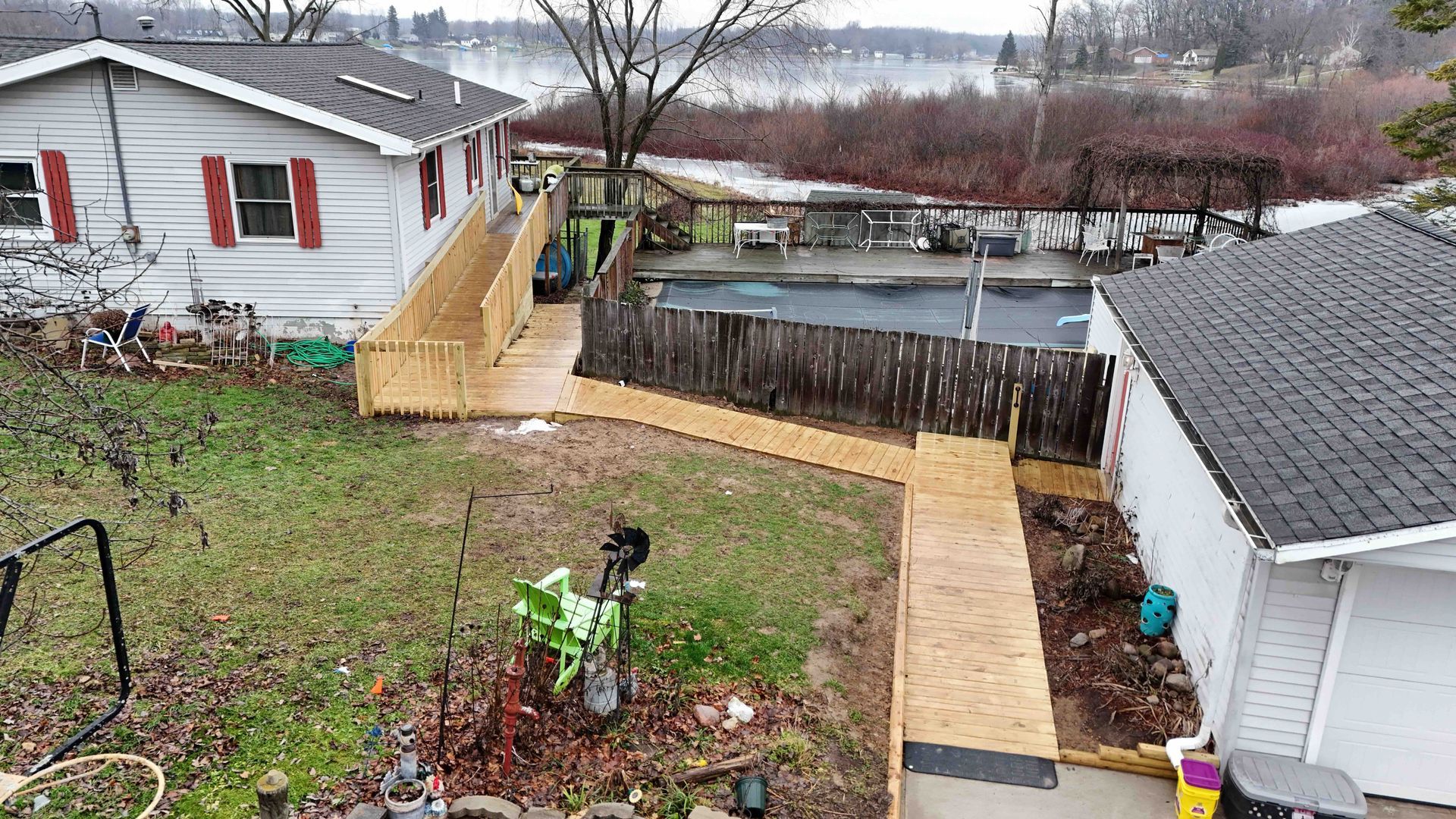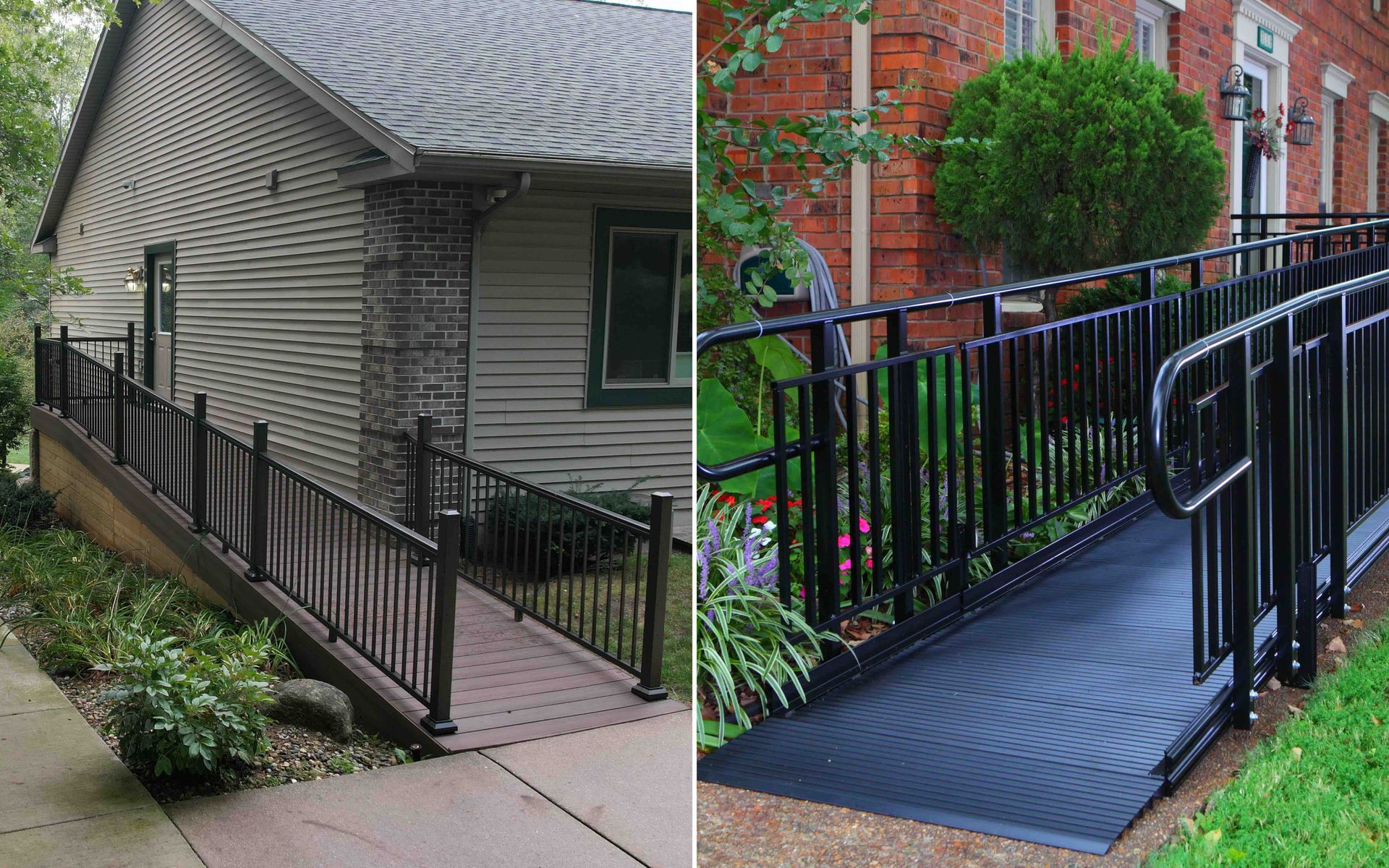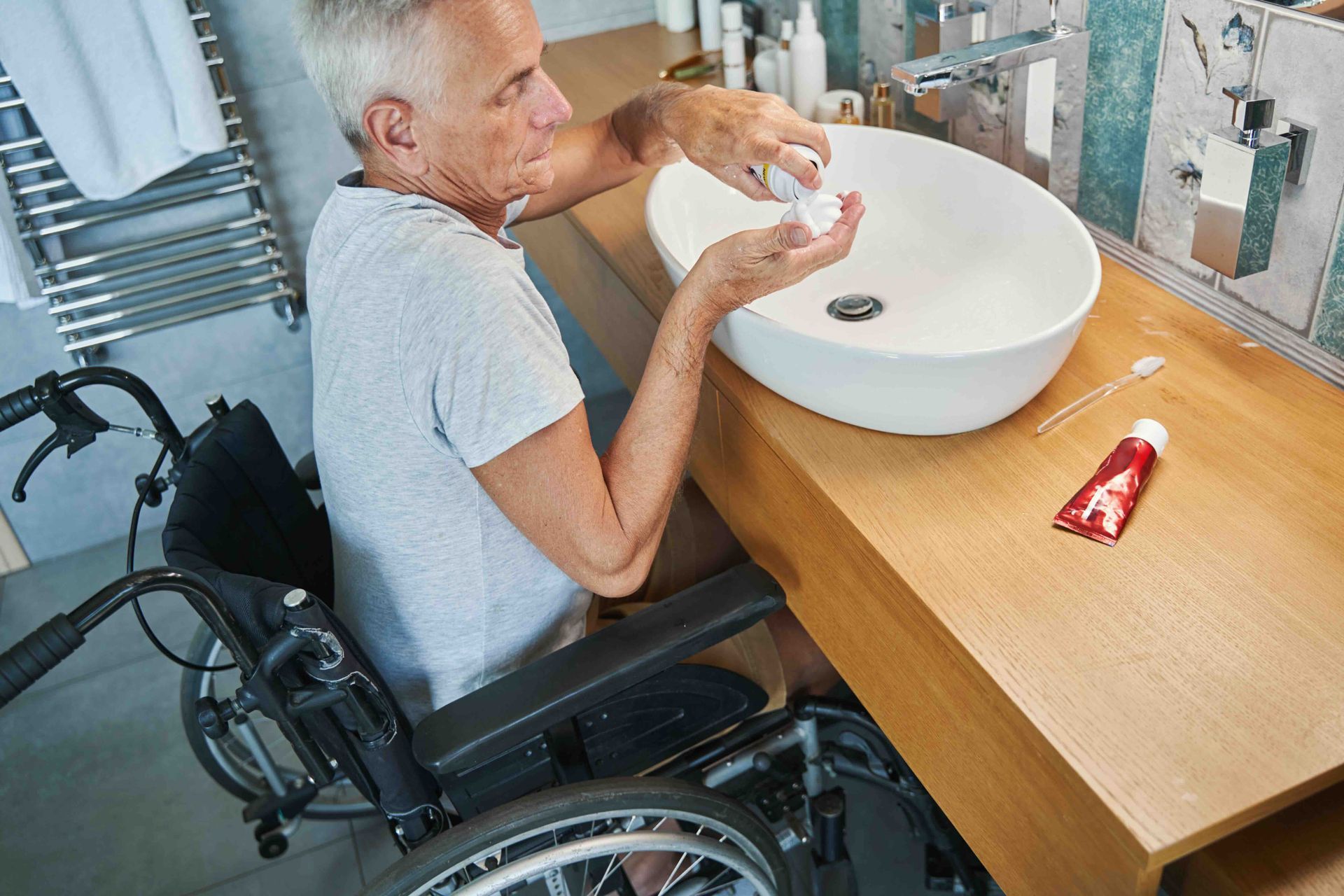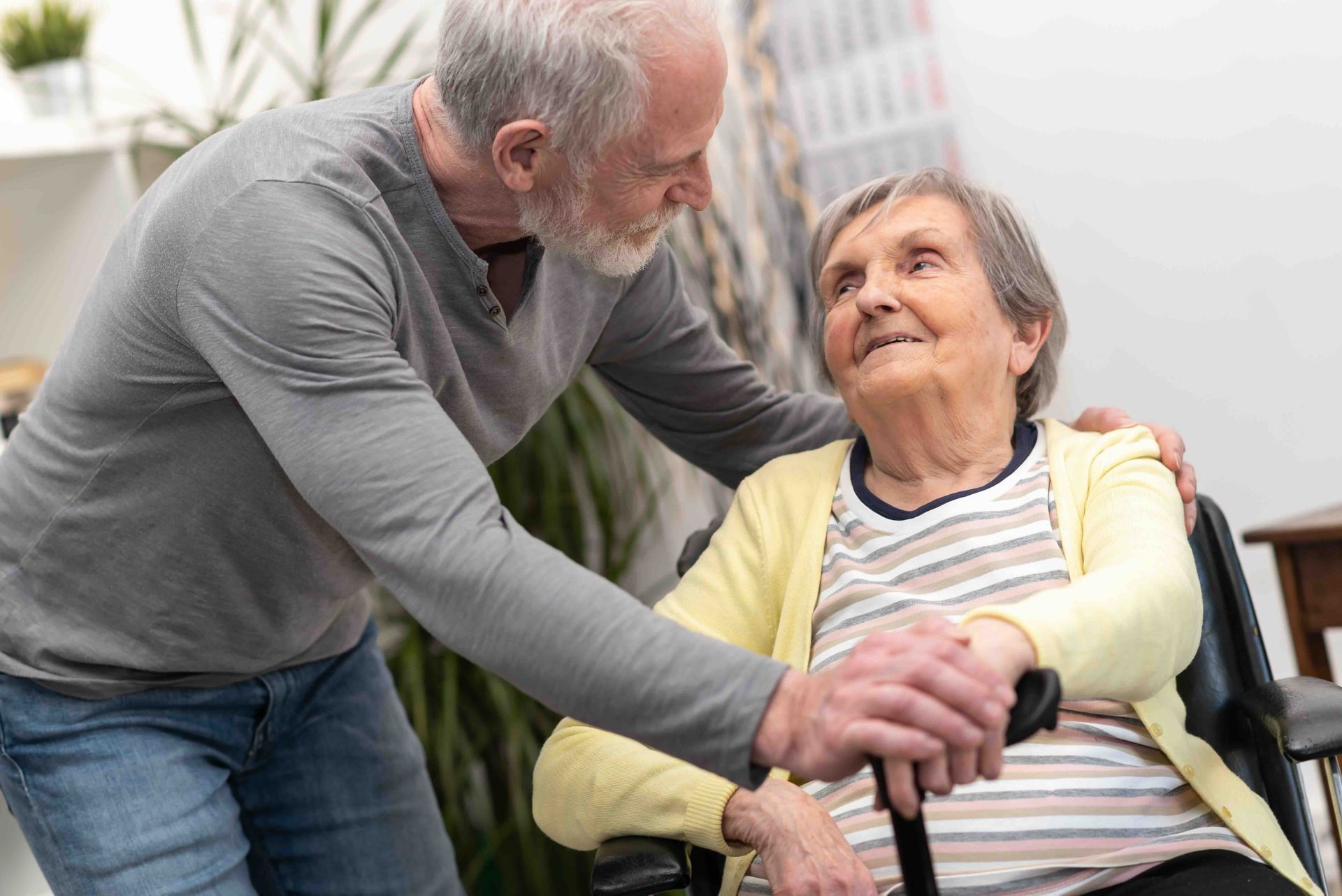Living with limited mobility presents unique challenges, but having a structured daily routine can significantly improve the quality of life for a person using a wheelchair. A well-planned schedule fosters independence, enhances mental well-being, and supports physical health.
Are you looking for an expert resource in accessible spaces, special modifications for persons with mobility challenges, and more? Contact Lakeshore Barrier Free today.
Morning Routine
Waking Up and Getting Ready
Starting the day with a consistent wake-up time helps regulate sleep patterns. It is essential to ensure the bedroom setup is accessible and all necessary items are within reach. A bedside organizer, grabber tool, and automated lighting can assist in making the morning transition easier. Caregivers should also focus on creating a comfortable and stress-free environment for the patient.
Personal Hygiene and Dressing
Maintaining personal hygiene is crucial for overall health. Wheelchair users may require adaptive equipment such as a shower chair, grab bars, or long-handled sponges to facilitate bathing and grooming. Brushing teeth, washing the face, and using moisturizers can be incorporated into the routine. Dressing in comfortable, adaptive clothing that is easy to wear enhances both convenience and confidence.
Breakfast and Nutrition
Healthy Eating Habits
A nutritious breakfast is vital for sustaining energy levels throughout the day. Preparing meals in advance or using adaptive kitchen tools can simplify food preparation. High-protein foods, fiber-rich fruits, and whole grains should be prioritized to maintain balanced nutrition.
Hydration
Drinking adequate water prevents dehydration and aids digestion. Placing a water bottle within easy reach encourages hydration. Additionally, consuming herbal teas or fruit-infused water can make hydration more enjoyable.
Morning Activities
Physical Therapy and Exercise
Regular movement is essential to prevent muscle stiffness and improve circulation. Depending on the individual’s needs, a physical therapist may recommend:
- Stretching exercises to enhance flexibility
- Upper-body workouts to strengthen muscles
- Chair yoga to promote relaxation
- Resistance band exercises to maintain mobility
Consistency is key, and these exercises should be performed daily to maximize benefits.
Regular movement around the house is also easier if you invest in barrier-free home modifications.
Cognitive Stimulation
Keeping the mind active is just as important as maintaining physical health. Engaging in mentally stimulating activities such as:
- Reading books or listening to audiobooks
- Solving puzzles or playing memory-enhancing games
- Learning a new language or skill through online courses
These activities help improve concentration, memory, and overall cognitive function.
Midday Routine
Lunch and Social Interaction
A well-balanced lunch should include proteins, vegetables, and carbohydrates to sustain energy. Socializing during meals, whether in person with family or through virtual calls with friends, reduces feelings of isolation and enhances emotional well-being.
Rest and Relaxation
After lunch, taking a short break or nap can help the body recharge. Using a comfortable recliner or wheelchair cushion provides better support and relaxation. Light meditation or deep breathing exercises can also contribute to mental relaxation.
Afternoon Activities
Hobbies and Interests
Engaging in hobbies brings joy and a sense of accomplishment. Some wheelchair-friendly hobbies include:
- Painting, knitting, or crafting for creativity
- Playing a musical instrument to enhance cognitive skills
- Gardening in raised beds to enjoy nature
- Technology-based activities such as gaming or social media participation
Outdoor Time
Spending time outdoors offers numerous benefits, such as improved mood and increased vitamin D levels. Activities may include:
- Taking a wheelchair-accessible stroll in a park
- Sitting outside to enjoy fresh air and sunshine
- Engaging in light gardening
If weather conditions prevent outdoor activities, an indoor garden or balcony space can serve as a great alternative.
Evening Routine
Dinner and Family Time
Dinner should be nutritious and balanced, incorporating proteins and vegetables. Sharing meals with family members or caregivers strengthens relationships and provides an opportunity to discuss the day’s events.
Gentle Stretching
Performing gentle stretches before bedtime helps relax muscles and reduce stiffness. A guided wheelchair-friendly yoga session can also be a great way to unwind and prepare for sleep.
Nighttime Routine
Personal Care and Hygiene
Before bed, a simple hygiene routine should be followed, including:
- Brushing teeth and washing the face
- Moisturizing the skin to prevent dryness
- Changing into comfortable sleepwear
Caregivers can assist with any tasks that require additional support.
Setting Up for the Next Day
Preparation for the next day ensures a smoother morning routine. This includes:
- Laying out clothing and necessary accessories
- Placing essential items like water, medications, and a phone within reach
- Setting an alarm for a consistent wake-up time
Relaxation and Sleep
Creating a calm bedtime environment enhances sleep quality. Methods to promote relaxation include:
- Dimming the lights and reducing noise
- Listening to calming music or nature sounds
- Practicing deep breathing exercises or guided meditation
A comfortable bed with supportive pillows and blankets further improves sleep quality.
Skin Health for Patients in Wheelchairs
Maintaining optimal skin health is paramount for individuals who rely on wheelchairs permanently. Prolonged immobility creates a heightened risk for skin breakdown, particularly pressure ulcers, which can significantly impact quality of life. Caregivers are essential in implementing preventative measures to safeguard the patient's skin integrity.
Consistent Skin Observation and Evaluation
Regular and thorough skin assessments are the cornerstone of preventative care. Daily inspections are crucial, particularly focusing on bony prominences such as the sacrum, heels, elbows, and hips, where pressure is concentrated. Caregivers should meticulously observe for any signs of redness, warmth, swelling, or breaks in the skin. Documenting these observations, including the date, location, and description of any abnormalities, is essential for tracking changes and facilitating timely intervention. This record serves as a valuable tool for healthcare professionals in monitoring the patient’s skin health.
Strategic Pressure Redistribution
Relieving pressure is vital in preventing skin breakdown. Repositioning the patient every two hours is fundamental, even if the patient appears comfortable. This frequency helps to redistribute weight and mitigate prolonged pressure on any single area. Utilizing specialized pressure-relieving cushions and mattresses designed for wheelchair use can significantly enhance comfort and distribute weight more evenly. Encouraging the patient to shift their weight every 15 to 30 minutes, if possible, is another effective strategy. If the patient requires assistance, caregivers should provide support for these weight shifts.
Effective Moisture Management
Maintaining a clean and dry skin environment is crucial. Gentle cleansing with a mild, pH-balanced soap followed by thorough patting dry, particularly in skin folds, is essential. Applying fragrance-free moisturizers helps to prevent dryness and cracking. Barrier creams or ointments are beneficial in protecting the skin from excessive moisture, particularly in cases of incontinence. Opting for clothing and bedding made of breathable, moisture-wicking fabrics can further promote skin dryness and comfort.
Minimizing Friction and Shear Forces
Reducing friction and shear forces is another critical aspect of skin care. When repositioning the patient, caregivers should always lift rather than drag them across surfaces to prevent skin tears. Ensuring that clothing and bedding are free of wrinkles and seams that could rub against the skin is also essential. Protective dressings or skin sealants can be applied to areas prone to friction for added protection.
Nutritional and Hydration Support
A balanced diet rich in protein, vitamins, and minerals plays a vital role in supporting skin health and wound healing. Adequate hydration is equally important, as it helps maintain skin elasticity and overall health. Caregivers should encourage the patient to consume sufficient water throughout the day.
Wheelchair Maintenance and Fit
Ensuring the wheelchair fits the patient correctly is crucial to prevent pressure points and discomfort. Regular inspections of the wheelchair for any loose or damaged parts that could cause skin irritation are also necessary.
Open Communication and Education
Educating both the patient and caregivers about the importance of skin care and the strategies for preventing pressure ulcers is essential. Open communication between the patient, caregivers, and healthcare professionals allows for the prompt identification and management of any skin concerns. This collaborative approach ensures the patient's skin health is prioritized and maintained.

Should You Invest in Wheelchair Ramps?
Wheelchair ramps play a pivotal role in enhancing the well-being of individuals who rely on wheelchairs, extending far beyond simply providing physical access. They contribute significantly to independence, psychological health, and social inclusion, all of which are crucial for overall well-being.
Firstly, ramps foster independence. By eliminating the barriers posed by stairs and curbs, ramps empower wheelchair users to navigate their environments with greater autonomy. This ability to move freely and independently reduces reliance on others, fostering a sense of self-sufficiency and control over their lives. This independence translates to improved self-esteem and a greater sense of personal agency.
Secondly, ramps contribute to psychological well-being. The frustration and limitations imposed by inaccessible environments can lead to feelings of isolation, helplessness, and even depression. Ramps mitigate these negative emotions by providing seamless access to homes, public spaces, and essential services. This accessibility reduces stress and anxiety associated with navigating physical barriers, promoting a more positive and optimistic outlook.
Thirdly, wheelchair ramps facilitate social inclusion. Inaccessible environments often prevent wheelchair users from participating fully in social activities, leading to isolation and a diminished sense of belonging. Ramps break down these barriers, enabling individuals to engage in community events, visit friends and family, and access recreational facilities. This social participation is essential for maintaining social connections, combating loneliness, and fostering a sense of belonging within the community.
Furthermore, ramps contribute to improved access to healthcare services. By ensuring that medical facilities, clinics, and hospitals are readily accessible, ramps enable wheelchair users to receive timely and appropriate medical care. This accessibility is crucial for maintaining physical health and preventing complications that can arise from limited access to healthcare.
In essence, wheelchair ramps are more than just architectural features; they are vital tools that promote independence, enhance psychological well-being, facilitate social inclusion, and ensure access to essential services. By breaking down physical barriers, ramps empower wheelchair users to live fuller, more engaged lives, ultimately improving their overall well-being.
TALK TO THE EXPERTS OF LAKESHORE BARRIER FREE TODAY!
We believe that everyone should have access to every area of their home! We work directly with you to make sure that every grab bar, bathroom sink, kitchen countertop, patient lift, and more is at the perfect location for you and your loved ones. Call us at
(616) 477-2685 or email us at
Info@LakeshoreBarrierFree.com
Share this blog






